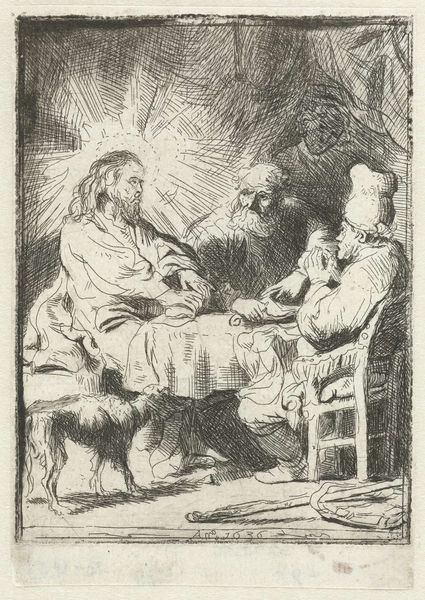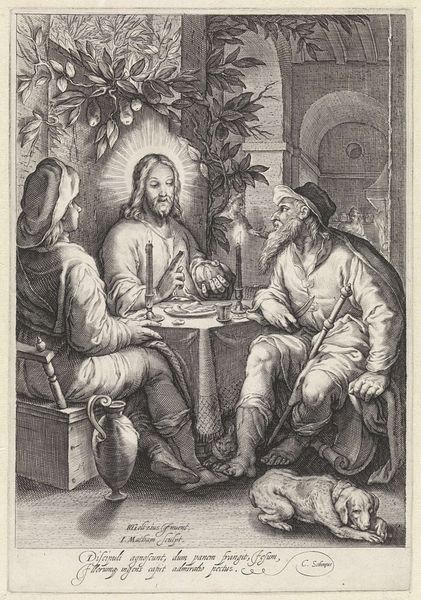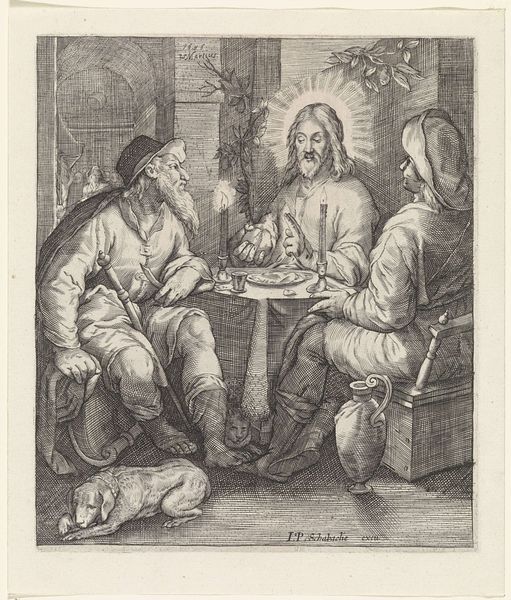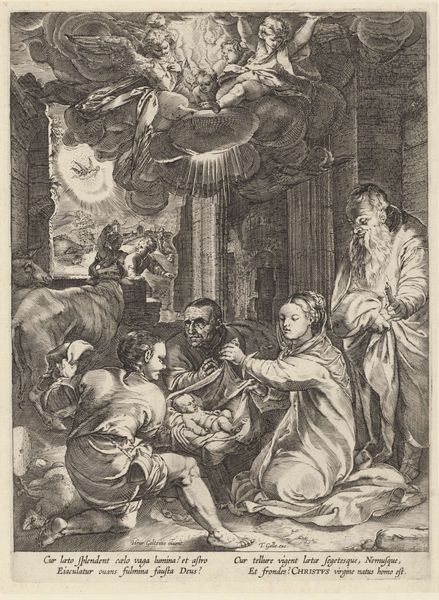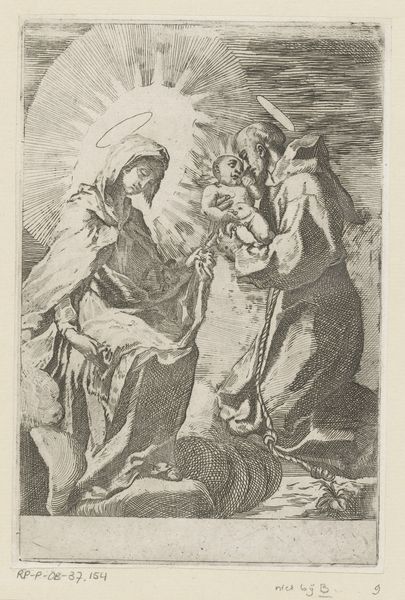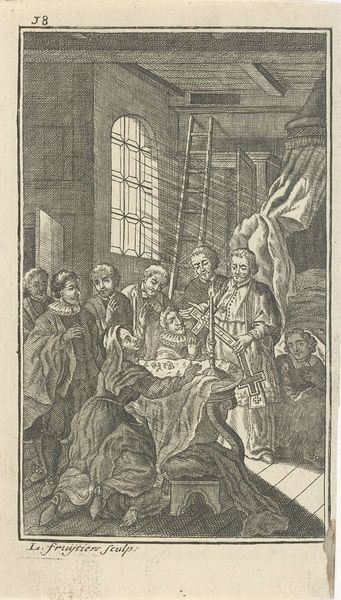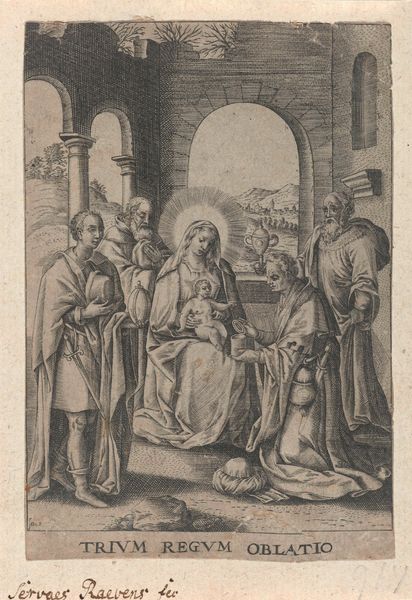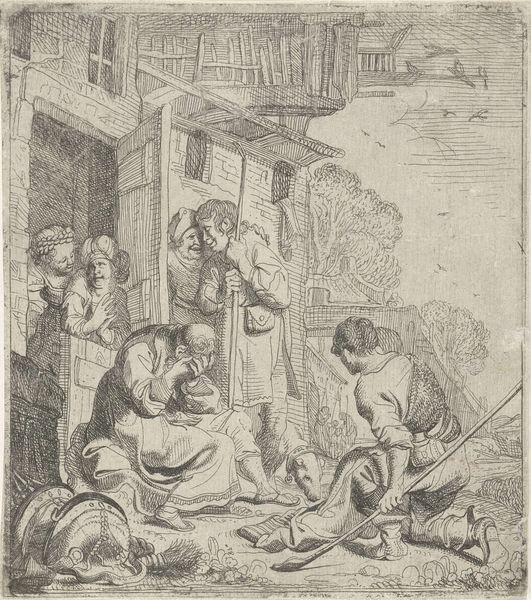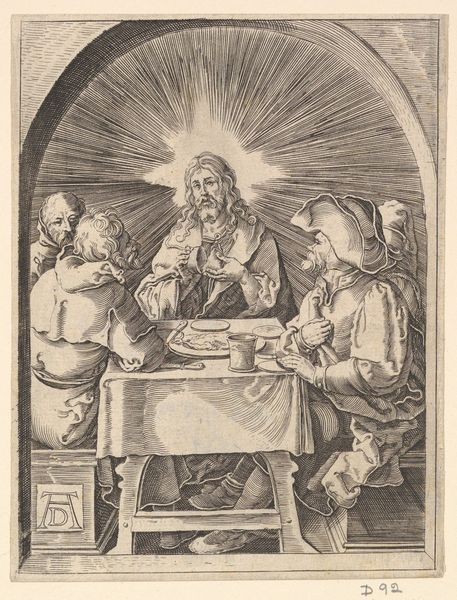
engraving
#
narrative-art
#
baroque
#
old engraving style
#
figuration
#
line
#
history-painting
#
engraving
Dimensions: height 95 mm, width 70 mm
Copyright: Rijks Museum: Open Domain
Editor: We’re looking at “Christus at Emmaus: the smaller plate,” an engraving that’s been dated sometime between 1711 and 1800, currently held in the Rijksmuseum collection, created by an anonymous artist. It’s quite detailed, with all these tiny, precise lines creating a range of textures and values. It almost has an ethereal quality. How would you interpret this work from a formalist perspective? Curator: Indeed. Notice the artist’s masterful use of line to delineate form and create depth. Observe the dramatic contrast between light and shadow; a clear example of Baroque aesthetics even within this modest medium. It focuses the eye, no? Note how the radiating lines emanating from Christ function not merely as a halo but as a compositional element, directing our gaze and fracturing the surrounding space. What impact does that fractured space have on the viewer? Editor: I see it, how the light around Christ pulls you in! And the contrast gives the scene so much drama, almost theatrical. So, would a formalist reading prioritize the use of light and shadow over, say, the religious narrative depicted? Curator: Precisely. While the narrative context provides a framework, the formalist approach encourages a focus on the intrinsic elements and the dynamics created through the orchestration of line, tone, and space. Consider the textural variations achieved through the engraver's craft, and how these manipulations alter our reading of the subject matter. Editor: So, less about who is depicted and more about how they are depicted through these specific visual tools. That's helpful. I appreciate how you drew my attention to how even light itself could act as a visual structuring tool. Thanks for expanding my understanding. Curator: My pleasure. The intrinsic dialogue between form and content provides endless insight, even in this seemingly small piece.
Comments
No comments
Be the first to comment and join the conversation on the ultimate creative platform.

